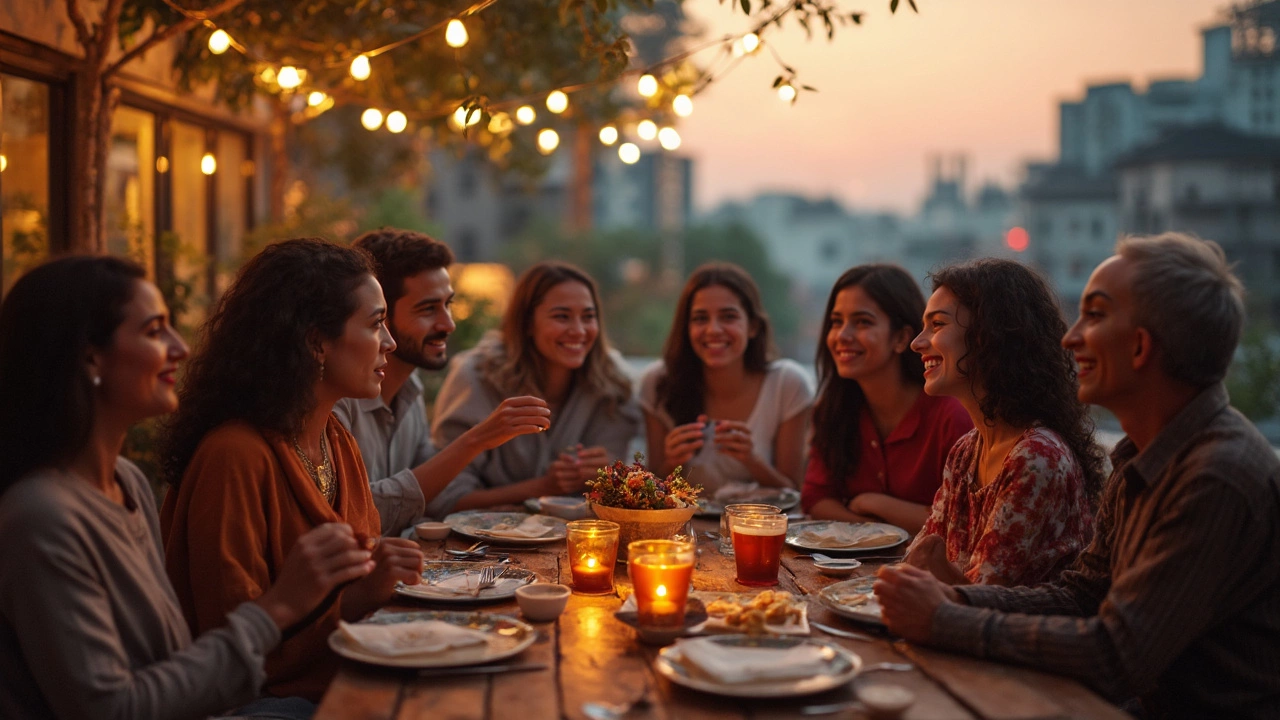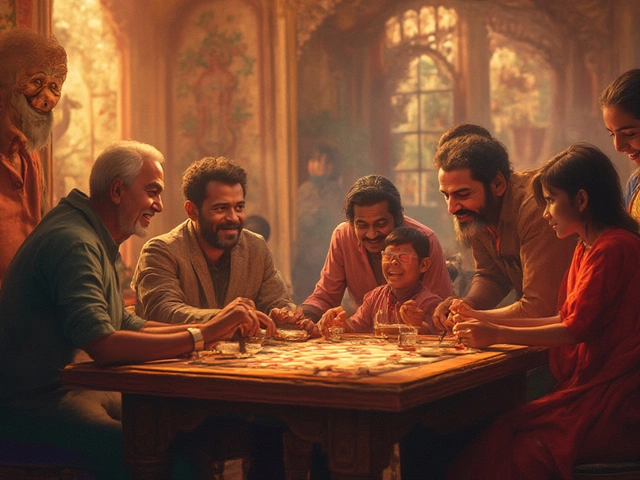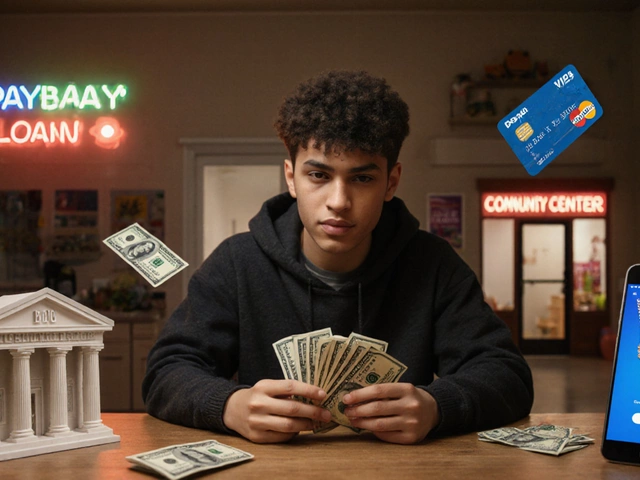So, are social clubs still around? Absolutely, and they’re getting more creative. If you think of dark wood panels, secret handshakes, and old-school dress codes—well, you’re not entirely wrong, but there’s a lot more going on now. These days, social clubs come in so many shapes and sizes, from chess and book lovers to cycling, gaming, dog owners, and even plant swap groups. People want connection, especially with so much of life happening online—turns out, face-to-face fun is still in demand.
Trying to build a personal network? Social clubs are way easier for meeting like-minded people than big networking events or scrolling through endless friend suggestions online. It’s less pressure. You gather around a shared interest and the conversation just flows. Plus, these clubs aren’t just for retirees—Gen Z and Millennials are leading a lot of the new club revivals. Whether it’s a rooftop dinner, a coding day, or a board game night at a café, clubs are finding smart ways to fit busy modern schedules and different lifestyles.
- Why People Still Join Social Clubs
- What Social Clubs Look Like Now
- Types of Clubs Popping Up
- What Keeps Clubs Alive in 2025
- How to Find the Right Social Club
- Tips for Building Community Inside Clubs
Why People Still Join Social Clubs
Even with social media, there's just something different about hanging out in person. People join social clubs because they want real-life connections, not just likes and comments. Clubs are about community—you get a ready-made group interested in the same stuff as you. Whether you’ve moved to a new city, want a new hobby, or just want to get out of the house, clubs make that easier.
Networking is another big reason. A 2023 survey by Meetup.com found that 72% of members joined groups to make friends outside work or school. Plus, 65% said they met people they’d never have crossed paths with otherwise. You end up making contacts that sometimes help with jobs, school projects, and even big life moments—like meeting your next roommate, co-founder, or running buddy.
It’s not all serious, though. Clubs boost mental health, too. A UCLA study showed adults who meet in groups regularly are 25% less likely to report feeling "very lonely" compared to those who don’t. Shared activities, silly inside jokes, even club rituals—they all make people feel they belong somewhere.
Here’s a rundown of what draws people in:
- Looking for face-to-face friendships
- Learning or practicing a skill outside classroom or work
- Having an excuse to regularly get out—less Netflix, more real-life hangouts
- Getting support in big life changes (moving, breakups, starting over)
- Networking that doesn’t feel forced
| Reason people join | % of respondents (Meetup.com 2023) |
|---|---|
| Meeting new friends | 72% |
| Learning new skills | 55% |
| Professional networking | 44% |
| Managing loneliness | 37% |
Joining a club isn’t just for social butterflies, either. Even if you’re shy or introverted, clubs are great for structured socializing—there’s a focus or activity so it’s not just small talk. At the end of the day, people keep joining clubs because everyone needs a place to just show up and belong.
What Social Clubs Look Like Now
Forget the stuffy, members-only lounges from movies—social clubs have totally switched things up. Walk into a club today, and you might find people gathering in a community kitchen, a coworking studio, an online Discord server, or even a local brewery. Digital spaces are a huge part of the club world now. Tons of groups use apps like Meetup or Facebook Groups to organize events, share resources, and keep things inclusive. Big city clubs, for example, now mix virtual and in-person meetups, which means you don’t have to live down the block to join in.
What’s trending? Clubs built around niche hobbies or personal growth are everywhere. Book clubs have exploded since 2020, with some hosting interactive Zoom author nights. Cycling clubs use GPS tracking apps like Strava to compete—remotely or on the same trail. One fun stat: According to Eventbrite's 2024 social trends report, hobby-based club events on their platform grew by 32% over the last 18 months. Not every club is about play, either—a lot now focus on career support, mental wellness, and volunteering.
Want more insight? Check out this quick comparison:
| Club Type | Main Platform | Typical Activity | Who Joins Most |
|---|---|---|---|
| Book Clubs | Zoom / WhatsApp | Monthly online chats + live meetups | Women 18-34 |
| Fitness Groups | Strava / Meetup | Group runs, cycling events, challenges | Men & Women 21-45 |
| Social Gaming | Discord | Online tournaments, chats, meetups | Teens + Millennials |
| Professional Clubs | LinkedIn / Slack | Networking, workshops | Young professionals 25-40 |
Most clubs today ditch the old school application forms, too. Some just ask you to RSVP or show up, and that’s it. Membership costs are flexible—you’ll find free local clubs, monthly subscriptions like Soho House, or small annual fees for things like chess or hiking groups. A lot of new clubs even offer “try before you join” events so you can see if the vibe is right. If you’re worried about being the new person, many organize newcomer nights or buddy systems to make starting out less awkward.
Types of Clubs Popping Up
Forget the idea that social clubs only mean big city golf courses or secretive men’s lounges. These days, you’ll run into all kinds of new groups that break the old mold. For example, pickleball clubs have taken off—membership in U.S. pickleball groups jumped by over 40% since 2021, according to the Sports & Fitness Industry Association. There’s a huge wave of hobby and activity-based groups too. Think of sunrise hiking clubs, plant swap circles, or local DIY maker workshops.
Even traditional clubs are getting makeovers. Book clubs aren’t just about reading classics; now they’re themed, like “sci-fi only” nights or meetups at local breweries. Tech meetups and coding clubs are growing fast, especially as more people dip their toes into software and app development. One global study by Meetup.com showed that technology-focused social clubs on their platform rose by 18% in the last two years.
Here’s a quick look at some popular club types popping up lately:
- Special-interest: Board game, fantasy football, or film clubs are everywhere, giving people a chance to geek out in a group.
- Fitness & recreation: Walking, running, cycling, or yoga clubs offer a way to stay healthy and be social at the same time.
- Food and drink: Pop-up supper clubs, craft beer tasting groups, and coffee meetup circles are on the rise in most urban areas.
- Professional: Networking, entrepreneurship, and freelance mastermind clubs help with everything from job hunting to brainstorming projects.
- Creative: Maker spaces and art collectives are especially big among younger crowds who want to build, paint, or design with others.
If you check out member stats from Meetup.com, there’s a clear pattern: people aren’t just looking for a place to hang out—they want to find a space that fits a social clubs vibe and a hobby they care about. Here’s some quick data:
| Club Type | 2023 Average Group Size | Growth since 2021 |
|---|---|---|
| Tech/Coding Meetups | 120 | +18% |
| Fitness Clubs | 95 | +25% |
| Food & Drink Clubs | 80 | +22% |
| Book Clubs | 30 | +15% |
The big takeaway? If there’s a spark of interest or a quirky hobby, there’s probably a club out there for it right now. And if not, people are more willing than ever to just start something new and invite others along.

What Keeps Clubs Alive in 2025
It’s not magic—there are clear reasons why social clubs are sticking around and even growing in some places. The first thing: flexibility. Modern clubs don’t stick to dusty traditions. Instead, they cut out rigid attendance rules and allow members to come and go. This helps busy people commit without feeling tied down. For example, survey data from The Social Club Company (2024) showed that 76% of their sign-ups favored clubs with relaxed, drop-in style events compared to fixed weekly meetings.
Technology is the next big driver. It used to be you’d need flyers and face-to-face invites. Now, it’s all WhatsApp groups, Discord servers, and Instagram pages. RSVPing is instant, announcements spread fast, and you can keep the conversation alive outside official meetings. Some clubs have apps just for their members to vote on new meetups or swap tips. This kind of instant connection means people don’t lose track, even if they miss a session or move cities.
Then there’s the diversity of activities. Clubs no longer stick to just one theme. Instead, there’s a mix. You might join a cycling group that also hosts movie nights or a foodie club that runs coding workshops. Mixing things up keeps members engaged and less likely to drop out when life gets busy.
Community feels real because people want a break from isolated screen time. In 2023, Meetup.com reported a 32% rise in attendance at in-person events. People are craving a sense of belonging, and clubs offer that in smaller, friendlier doses than a massive party or a faceless Facebook group.
And let’s be real, a club is only as good as its leaders. Good ones keep folks involved by letting members plan events and make decisions too. According to club coach Alice Barton, "Clubs that give their members a voice are the ones that last. It’s about everyone, not just a committee."
- Flexible schedules and event types
- Tech makes joining and staying easy
- Diverse activities keep it fresh
- Authentic community vibes
- Open, shared leadership
So, if you’re thinking clubs only survive by clinging to old ways, it’s actually the opposite. Adaptability and real connections drive their staying power in 2025.
How to Find the Right Social Club
Picking a social club that actually gets you excited to show up can feel overwhelming at first, but trust me, it's not as tough as it seems. Most successful clubs—those that keep people coming back—are built around a clear, shared interest. So, first thing: decide what you’re genuinely into. Maybe you’re passionate about books, hiking, cooking, or you just want to try something new. Jot down your top interests. That’s your starting point.
Now, finding clubs is easier than ever thanks to a bunch of online tools. Some of the biggest hotspots are Meetup, Facebook Groups, Eventbrite, and even Reddit. Colleges, community centers, and local libraries are still classic places to find posters or flyers. Even apps like Bumble BFF are getting in on the action by listing nearby social events and clubs. Quick tip: try searching with as many keywords as you can—like “board games Chicago” or “plant swap group LA.” This way you’ll get clubs that fit exactly what you want.
Before joining, check out what each club actually does. Most groups post pics or event recaps on social or their website, so you’ll get a feel if they’re formal or laid-back. Some clubs have open events or free trial sessions. Don’t skip these—they’re perfect for testing the vibe before you commit. If you’re shy or new to town, message the organizer in advance. People who run social clubs are often super friendly and want you to feel welcome.
Here are some smart steps to zero in on your perfect club:
- List your top interests and narrow them down.
- Search online and in your area using local forums and apps.
- Check the club’s recent activity and event turnout.
- Attend an open or trial event if possible.
- Reach out to members or organizers with any questions.
- Notice how you feel at events—if it's fun and you click with people, that's a good sign.
A recent survey by Statista in 2024 showed that roughly 38% of adults in the US have joined or considered joining a club within the last year, mainly to expand their social circles. And clubs with clear communication and regular meetups had retention rates above 60%, according to ClubLeaderPro, a community platform. Here’s a quick look:
| How People Found Clubs (2024) | Percent |
|---|---|
| Online platforms (Meetup, Facebook, etc.) | 57% |
| Word of mouth | 24% |
| Local publications/events | 13% |
| Campus/community center boards | 6% |
Bottom line: there’s no single right social club for everyone. It’s all about finding a vibe that feels natural. Don’t stress if the first club doesn’t wow you. With so many out there, you’ll find your crew.
P.S. Everyone’s secretly hoping the next new member will be a great fit. So go ahead—step in and try it out.
Tips for Building Community Inside Clubs
Getting people to show up is just half the story—what keeps them coming back is that real sense of community. If you want your social club to build strong ties, it takes more than pizza and a group chat. Researchers at the Stanford Center on Longevity found that ongoing engagement in clubs can cut loneliness by almost half, but only if folks feel truly involved. So, what actually works?
- Social clubs with regular, relaxed events see more return members than those that only meet for big special occasions. A simple weekly meet-up at a coffee shop or park keeps things casual and reliable.
- Names matter. Give members a chance to introduce themselves in creative ways—icebreakers aren’t just for kids. Try a "two truths and a lie" game or themed introductions to break down awkwardness fast.
- Rotate leadership or event planning. When everyone gets to pitch in, people feel a sense of ownership. Pass around duties like picking the next activity or bringing the playlist.
- Communication is key. Clubs using group chats, newsletters, or basic apps (like Slack or Discord) keep everyone in the loop. Fun polls, reminders, and photo sharing bring members into the inner circle, even between meetings.
- Celebrate wins—big or small. Clubs that recognize birthdays, achievements, or even silly challenges (“most creative outfit night!”) see members get excited to join in.
Remember, the best bonds form when people feel seen and heard, not talked over. Encourage everyone to share opinions, take feedback, and stay flexible enough to grow with the group’s interests. Consistency also matters—half-full rooms can be discouraging, but even five people hanging out every month can turn into a tight-knit crew over time. At the end of the day, community is all about showing up, reaching out, and making space for real conversations to happen.





